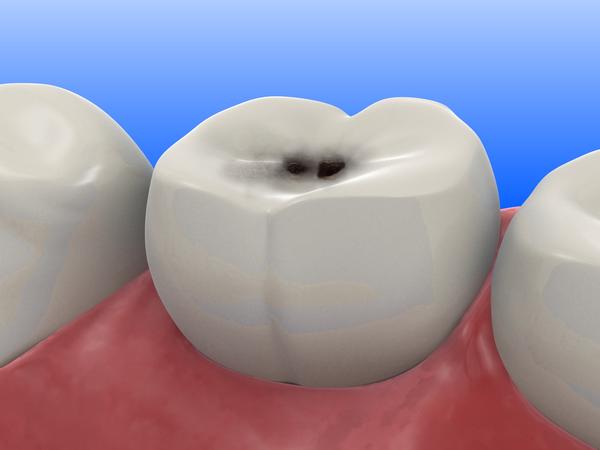Abstract
Streptococcus mutans employs a key virulence factor, three glucosyltransferase (GtfBCD) enzymes to establish cariogenic biofilms. Therefore, the inhibition of GtfBCD would provide anti-virulence therapeutics. Here a small molecule library of 500,000 small molecule compounds was screened in silico against the available crystal structure of the GtfC catalytic domain. Based on the predicted binding affinities and drug-like properties, small molecules were selected and evaluated for their ability to reduce S. mutans biofilms, as well as inhibit the activity of Gtfs. The most potent inhibitor was further characterized for Gtf binding using OctetRed instrument, which yielded low micromolar KD against GtfB and nanomolar KD against GtfC, demonstrating selectivity towards GtfC. Additionally, the lead compound did not affect the overall growth of S. mutans and commensal oral bacteria, and selectively inhibit the biofilm formation by S. mutans, indicative of its selectivity and non-bactericidal nature. The lead compound also effectively reduced cariogenicity in vivo in a rat model of dental caries. An analog that docked poorly in the GtfC catalytic domain failed to inhibit the activity of Gtfs and S. mutans biofilms, signifying the specificity of the lead compound. This report illustrates the validity and potential of structure-based design of anti-S. mutans virulence inhibitors.
Introduction
Dental caries is a multifactorial disease of bacterial origin, which is characterized by the localized destruction of dental hard tissues1, 2. Though the oral cavity harbors over 700 different bacterial species, Streptococcus mutans initiates the cariogenic process and remains as the key etiological agent3. Using key matrix producing enzymes, glucosyltransferases (Gtfs), S. mutans produces sticky glucosyl glucan polymers, which facilitate the attachment of the bacteria to the tooth surface. The glucans is a major component of the biofilm matrix that shields the microbial community from host defenses, mechanical and oxidative stresses, and orchestrates the formation of cariogenic biofilms4. Furthermore, copious amounts of lactic acid are produced as a byproduct of bacterial consumption of dietary sugars within the mature biofilm community, which ultimately leads to demineralization of the tooth surface, ensuing cariogenesis.
Current practices to prevent dental caries remove oral bacteria non-discriminatively through chemical and physical means such as mouthwash and tooth brushing5. Since the biofilm assembly renders bacteria to become more resistant to antibiotics and other manipulations, these traditional approaches have had only limited success. Additionally, existing mouthwashes are often associated with adverse side effects because the use of broad-spectrum antimicrobials are often detrimental to beneficial commensal species.
Selectively targeting cariogenic pathogens such as S. mutans has been explored previously, however it was found that the antimicrobial peptide also alters the overall microbiota6. Our increasing understanding of bacterial virulence mechanisms provides new opportunities to target and interfere with crucial virulence factors such as Gtfs. This approach has the added advantages of not only being selective, but may also help to preserve the natural microbial flora of the mouth7, which may avoid to exert the strong pressure to promote the development of antibiotic resistance, overcoming a major public health issue in the antibiotic era. It is well established that glucans produced by S. mutans Gtfs contribute significantly to the cariogenicity of dental biofilms. Therefore, the inhibition of the Gtf activity and the consequential glucan synthesis would impair the S. mutans virulence, which could offer an alternative strategy to prevent and treat biofilm-related diseases8, 9.
S. mutans harbors three Gtfs: GtfB, GtfC, and GtfD. While GtfB synthesizes pre-dominantly insoluble glucans, GtfD only produces water-soluble glucans, and GtfC can synthesize both soluble and insoluble glucans10,11,12. Previous studies have demonstrated that glucans produced by GtfB and GtfC are essential for the assembly of the S. mutans biofilms4, while glucans produced by GtfD serve not only as a primer for GtfB, but also as a source of nutrient for S. mutans and other bacteria13, 14. All Gtfs are composed of three functional regions: the N-terminal variable junction region, the C-terminal glucan-binding region, and the highly conserved catalytic region in the middle, which is essential for the glucan synthesis. The crystal structural of GtfC from S. mutans has been determined15, which provides key molecular insights for the design and development of novel Gtf inhibitors.
Polyphenolic compounds16,17,18,19,20,21,22,23 that include catechins, flavonoids, proanthocyanidin oligomers, and other plant-derived analogs24, 25 and synthetic small molecules26 have been studied extensively for years and were found to display modest anti-biofilm activities through modulating the expression of Gtfs of S. mutans. However, the selectivity of these bioactive compounds remains to be determined and the potency is not satisfactory for the biofilm inhibition.
In the present study, novel inhibitors of S. mutans Gtfs were developed through in silico screening of commercial compound libraries against the active site of the catalytic domain from the S. mutans GtfC. A lead compound targeting Gtfs was identified, synthesized, and shown to have the ability to bind to Gtfs and inhibit S. mutans biofilm formation selectively in vitro. Furthermore, the lead compound possesses anti-virulence properties in vivo.







